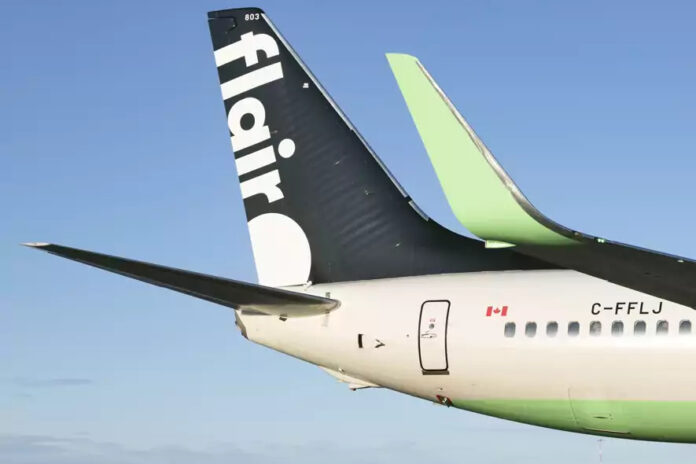Flair Airlines chief executive Stephen Jones says his low-cost carrier is finally running smoothly thanks to high passenger numbers, despite “growing difficulties” as the debt-ridden airline still struggles to earn the trust of consumers. consumers.
In an interview, the director said Flair topped the list of Canadian airlines for on-time summer flights, as well as load factor, with planes averaging 90% full last month .
“We’re far from perfect,” Mr. Jones said. We’ve had a lot of growing pains — some operational, some financial, some within the OTC. »
The latter refers to the Canadian Transportation Agency, which prompted Flair last year to reshuffle its board of directors and revoke the shareholder rights of 777 Partners, a key investor, in order to comply with the rules. relating to national ownership.
In addition, Flair must continue to make payments of more than $7 million per month on its 21 leased Boeing 737 aircraft and manage loans of between $200 million and $300 million, Jones added.
“We’re paying off expensive debt,” he said, citing 18% rates on loans from 777 Partners, the Miami-based company that owns a quarter of the airline.
Nobody else was prepared, during the time of COVID-19 and high oil prices, to say, “You know what, we believe in the vision of a low-cost carrier in Canada, here’s some silver at 17%. »
“The balance sheet isn’t in great shape,” Jones said, but noted that interest is “non-monetary” — no monthly payment required — and just adds to principal. . “At some point there will be some form of balance sheet, whether it’s restructuring or something else. »
Despite the debt burden, Flair’s improved performance marks a marked change from the frequent delays and frustrations that surrounded the Edmonton-based airline until March, when a leasing company seized four of its planes following claims of missed payments.
A Facebook page dedicated to Flair’s passenger issues continues to register concerns, but there are fewer complaints than a year ago, when travel chaos descended on an industry that was unprepared to the increase in post-pandemic demand.
Now, Flair plans to redouble its efforts to emphasize domestic travel in the summer and routes to the sun in the winter. It can also breathe a little easier, as low-cost carrier Swoop prepares to shut down and be incorporated into WestJet, its parent company, following fierce rivalry over routes and fares.
“We are now moving away from what has been a kind of brutal inner struggle,” Jones said.
Operational improvements are also helpful, he said.
“We’re running a decent airline,” he said. More and more, people are realizing that they can travel across Canada affordably and have fun. »
Barry Prentice, who heads the University of Manitoba’s Transportation Institute, says it’s the shoulder seasons of fall and spring that can hurt a carrier’s bottom line, especially for passenger-focused airlines. leisure like Flair and Lynx Air, another low-cost carrier that launched last year in a now-crowded market.
Traditionally, fewer vacationers fly during these months, and major carriers can fall back on business travelers, whose margins are higher — although the return of business customers has been slow due to the rise of videoconferencing.
“A lot of people, if they have a choice between one of the big airlines and one that they don’t quite trust, choose the big one,” Prentice said.
“And if there is a problem, depending on the intensity of their fleet, they don’t have the extra capacity to replace it,” he added, referring to the much smaller aircraft of low-cost airlines.
Nevertheless, Mr. Prentice believes that the low-cost carrier business model, which favors leasing rather than buying aircraft, provides greater flexibility to respond to market conditions by reducing expenses during lean times.
“The problem airlines always face is market demand. When things are going well, they do very well, and when the economy starts to falter, they really stumble,” he concluded.















